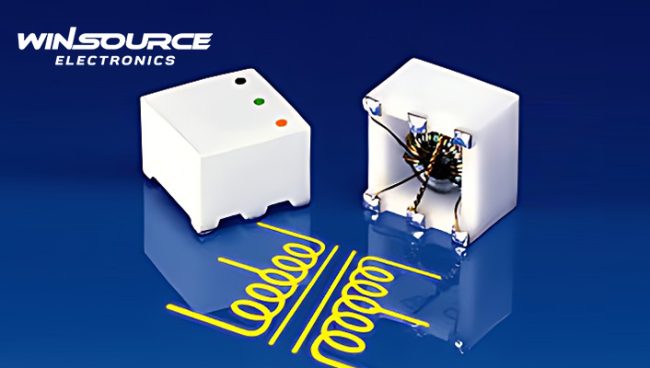
The TTWB-1-BLD RF transformer is a specialized component designed to facilitate the efficient transfer of radio frequency signals between circuits. Its compact size, high-frequency handling capabilities, and low insertion loss make it an ideal choice for applications ranging from telecommunications to wireless systems.
Table of Contents
ToggleIncorporating TTWB-1-BLD RF Transformer into Your Design
Now that we have explored the key features and applications of the TTWB-1-BLD RF transformer, let’s examine a step-by-step guide for effectively integrating this transformer into your design.
Step 1: Define System Requirements
Before incorporating the TTWB-1-BLD into your design, clearly define your system requirements. Determine your application’s frequency range, power levels, and impedance-matching requirements. This initial step will guide subsequent design decisions.
Step 2: Circuit Analysis
Perform a thorough circuit analysis to identify the optimal location for the TTWB-1-BLD within your system. Consider signal flow, impedance matching, and the desired transformation ratio. Use circuit simulation tools to model the transformer’s behavior in your specific application.
Step 3: Choose the Right Transformer Configuration
The TTWB-1-BLD RF transformer is available in various configurations, including balun and run configurations. Choose the configuration that best suits your application. For instance, a balun configuration may be suitable for a balanced-to-unbalanced conversion in antenna systems.
Step 4: Ensure Proper Impedance Matching
Impedance matching is critical for optimizing power transfer and minimizing signal reflections. Calculate the required turns ratio of the transformer to achieve the desired impedance transformation. The TTWB-1-BLD’s datasheet provides valuable information to assist in this calculation.
Step 5: PCB Layout Considerations
Pay careful attention to the PCB layout to minimize parasitic elements and ensure optimal performance. Follow best practices for RF layout, such as maintaining controlled impedance transmission lines and placing the transformer close to the components it interfaces with.
Step 6: Perform Signal Integrity Analysis
Utilize signal integrity analysis tools to evaluate the impact of the TTWB-1-BLD on the overall signal integrity of your system. Analyze factors such as insertion loss, return loss, and crosstalk to ensure that the transformer meets the performance requirements of your design.
Step 7: Prototype and Test
Before finalizing your design, create a prototype to validate its performance. Use RF test equipment to measure key parameters such as insertion loss, return loss, and isolation. Iterate on the design as needed to address any issues identified during testing.
Step 8: Documentation and Compliance
Document the integration of the TTWB-1-BLD RF transformer in your design, including the transformer’s specifications, placement on the PCB, and any design considerations. Ensure that your design complies with relevant industry standards and regulations.
Key Features of TTWB-1-BLD RF Transformer
Frequency Range:
The TTWB-1-BLD RF transformer is engineered to operate within a specific frequency range, typically in the megahertz to gigahertz range. This capability makes it suitable for various RF applications, including RF amplifiers, mixers, and modulators.
Low Insertion Loss:
One of the TTWB-1-BLD’s defining features is its low insertion loss. Insertion loss refers to the decrease in signal strength as it passes through the transformer. The TTWB-1-BLD’s minimal insertion loss ensures that the signals experience minimal attenuation, preserving the integrity of the RF communication.
Compact Design:
The transformer’s compact design results from meticulous engineering, enabling it to fit seamlessly into space-constrained designs. This feature is particularly beneficial for modern electronic devices where miniaturization is critical.
High Isolation:
The TTWB-1-BLD boasts high isolation between its primary and secondary windings. This ensures that the RF signals do not leak or interfere with each other, maintaining signal purity and minimizing crosstalk.
Applications of TTWB-1-BLD RF Transformer
The versatility of the TTWB-1-BLD extends its applicability across various domains. Here are some typical applications where this RF transformer excels:
Wireless Communication Systems:
The TTWB-1-BLD plays a crucial role in signal processing in wireless communication systems. Whether in transceivers, receivers, or transmitters, this transformer aids in maintaining signal integrity and optimizing the performance of wireless devices.
RF Amplifiers:
RF amplifiers require precise signal conditioning to boost the power of RF signals without introducing excessive noise. The TTWB-1-BLD, with its low insertion loss and high isolation, is an excellent choice for integrating into RF amplifier designs.
Antenna Matching Networks:
Efficiently matching antennas with RF circuits is essential for maximizing power transfer. The TTWB-1-BLD RF transformer, with its impedance transformation capabilities, proves invaluable in antenna-matching networks.
Test and Measurement Equipment:
Accuracy and reliability are paramount in laboratories and test environments. The TTWB-1-BLD is useful in test and measurement equipment, where it aids in maintaining signal fidelity during various RF tests.
Conclusion
The TTWB-1-BLD RF transformer is a reliable and versatile component that contributes to the success of RF applications across various industries. By understanding its key features and applications and following a systematic integration process, engineers can harness this transformer’s full potential in their designs. As technology advances, the TTWB-1-BLD remains at the forefront, empowering engineers to create cutting-edge solutions in the ever-expanding field of electronic design.
For those looking to source the TTWB-1-BLD and related components, WIN SOURCE stands as a reliable partner in the procurement process. As a leading distributor of electronic components, WIN SOURCE provides a comprehensive selection of RF transformers, ensuring that engineers have access to the latest and most innovative solutions.

COMMENTS